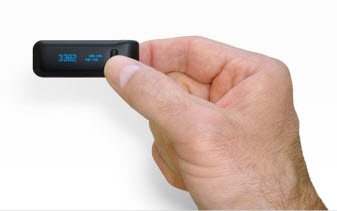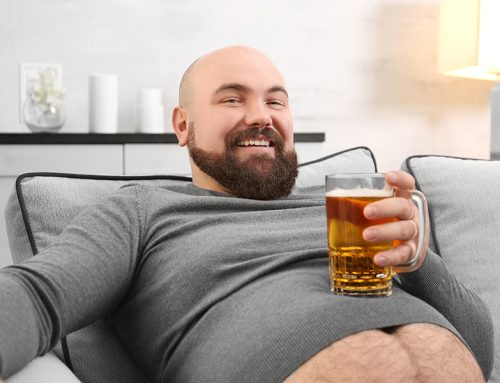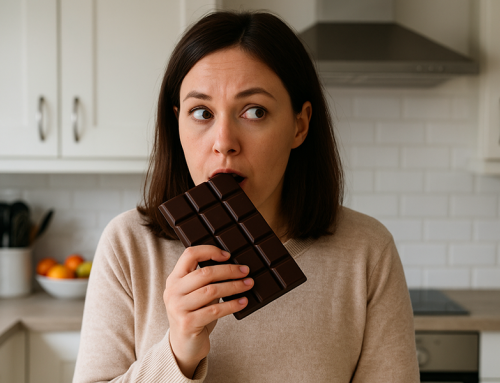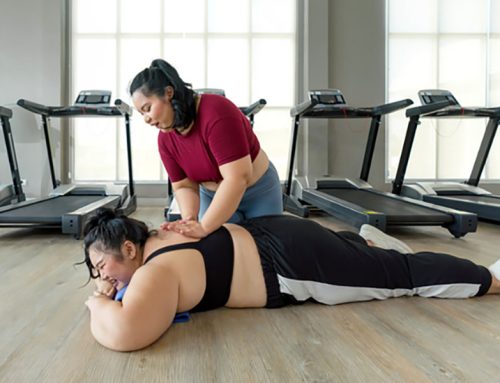Finally, I bought a Fitbit. I say finally because I’d been hearing about the Fitbit (and similar activitiy tracking devices like the BodyBugg) from my friends, readers and Inner Circle members for the past few years. My curiosity was eventually piqued enough to spring for the $99 bucks and try it out myself.
The FitBit is a pedometer – a little electronic gadget – that slips in your pocket or clips on your clothes and tracks how many steps you take every day.
Why would I want to keep track of how many steps I take in a day? Why would you? That’s what today’s post is about.
There are two reasons why I decided to experiment with a pedometer. One is because of all the research I’ve done on the importance of NEAT – Non exercise activity thermogenesis.
NEAT is all the calories you burn each day from activity, not counting your formal training. Even if you train very hard for an hour every single day – that’s only 1 out of 24 hours. What about your activity level the other 23 hours of the day? All that activity – walking, physical work at your job, doing the dishes, vacuuming, yard work, even the tiny little things like changing posture and fidgeting – adds up a heck of a lot more than most people realize. They simply don’t notice it because it may be a little bit here and a little bit there.
Someone with a physical job has a very high level of NEAT. Someone with a desk job who then hits the couch at night after work has a very low level of NEAT (this is often the difference between a person who is overweight and a person who is underweight, who ironically call themselves endomorph or ectomorph, respectively… but more on that in an upcoming article). Walking is, by far, the largest component of NEAT.
Most people don’t know what NEAT is, or they do know what it is and they ignore it because they figure it’s not a “real workout” – it’s just miscellaneous activity throughout the day, so it couldn’t possibly matter, right? After all, you keep hearing about how intense weight training and high intensity interval training (HIIT) are the real keys to fat loss don’t you? Well, indeed, workouts like progressive weight training and HIIT cardio are the most efficient way to spend a limited amount of formal training time, but plenty of research shows that ignoring or downplaying the importance of NEAT would be a grave mistake.
Two of the top experts in this area are Dr. James Levine of the Mayo clinic and Dr James Hill of the University of Colorado. Both have written books and conducted studies showing that obese people are profoundly more sedentary than lean people. “They move 2.5 hours less per day than lean people, which means they burn roughly 350 fewer calories per day,” said Dr. Levine.
Dr. Hill suggests that even taking enough extra steps each day to burn 100 more calories could make a difference over time, if all else remains equal (which it often does not – but that will have to be the subject of another post). The valid point is, a small increase in NEAT, including a small increase in extra steps taken each day, if done every day, above and beyond what was done before, could help millions of people lose weight and keep it off.
That leads me to the second reason I wanted to experiment with a pedometer and upping my NEAT through taking more steps. About six years ago, there was a major change in my lifestyle. After nearly 15 years in the fitness business as a personal trainer and health club manager, I left that side of the industry and went fully self-employed as a full-time writer, researcher and internet publisher. I continued coaching people, but I did it virtually through my Burn the Fat Inner Circle member’s-only forum, as well as writing books and articles like this one.
Although there was some desk-bound office work involved in managing health clubs, for years I had spent a large chunk of my time on my feet out on the gym floor, training clients and maintaining the clubs. Suddenly, literally overnight, my new job had me glued to a chair 10-12 hours a day (and more hours than that when working on important projects).
That may not seem like a big deal for a person like me, who is in the gym training hard 5 days a week doing both weights and cardio, except for one thing: In addition to reading up on NEAT, I also came across the research showing how detrimental it is to your health, fitness and weight control endeavors to sit for long periods of time.
You’ve probably seen the headlines about the metabolic and ill health risks of too much sitting yourself, but the new twist that emerged in the studies just a few years ago is that too much sitting time is an independent risk factor for obesity and metabolic health problems, separate and distinct from getting too little exercise.
For years, studies by NASA have shown the serious metabolic consequences of extreme muscular unloading and there have recently been some interesting parallels drawn between studies on zero gravity and prolonged sitting. The loss of local muscle stimulation from sitting suppresses skeletal lipoprotein lipase activity and glucose uptake, while the mere act of standing involves isometric contraction of the postural (anti gravity) muscles. In the past, standing still would have been lumped in with sedentary behavior, but now scientists are even saying that sitting and standing are different. Sitting is worse.
But again, why should I care about this stuff? How does this apply to ME? I pump iron in the gym 5 days a week, with nearly the same type of intensity as I did in my bodybuilding competition days, and if I want to get leaner, I crank up the cardio sessions. I’m burning more than enough calories that, when combined with my diet, I have no difficulty getting as lean as I want to be – even to this day after I made this shift in my lifestyle to a desk job as a writer.
Well, I started to care when I also read the research that said you could meet the optimal guidelines for physical activity, but if you also sit for long periods, there could still be negative consequences that are not un-done by your formal workouts. Researchers even coined a name for this – “The active couch potato.”
Imagine my surprise when it dawned on me – ME of all people – that I was the textbook definition of active couch potato: hard workouts in the gym, easily totaling 5 or more hours of training per week – and then almost the entire rest of my life glued to a chair, sitting in front of the computer. Even if I hadn’t seen or felt any detriment yet, I didn’t like the thought of being any kind of couch potato (desk potato?), and I didn’t want to wait and see what a decade (or two) of sitting 90% of the day might bring later on.
This combination of my reading up on NEAT and the effects of prolonged sitting, combined with recommendations from friends, prompted me to purchase the Fitbit.
My goal was to measure for the first time ever, how much I was actually walking each day, if and how this would affect my activity level, how it might be valuable as a feedback or motivation tool and also, whether this might have any real application for me – as a bodybuilder and fitness professional – with regards to improving my results or perhaps staying leaner all year round just by taking some extra steps every day.
That ought to interest you too because it flies in the face of everything you’ve been hearing about “training MUST be high in intensity or it’s a waste of time.”
Be sure to read part 2 to see my “product review” of the Fitbit (did it work? Did it accurately track the steps and calories burned, etc), hear about my actual step counts and to find out what I discovered from my little experiment (so far) and how my findings might help you get healthier, get leaner and stay lean.
ME? Tom Venuto? A Couch Potato? My NEAT Step Experiment Part 2
Related articles:
NEAT tricks for burning more fat:
https://www.burnthefatblog.com/archives/2012/03/neat-tricks-for-burning-more-fat.php
The active couch potato:
https://www.burnthefatblog.com/archives/2010/10/are-you-an-active-couch-potato.php
Recommended reading:
For some fascinating additional information on N.E.A.T. (non exercise activity thermogenesis) and the importance of high activity levels and step counts (including the reason why the Amish can eat pie, gravy and lots of carbs and still stay thin), be sure to check out The Body Fat Solution, chapter 7 in particular:
The Body Fat Solution By Tom Venuto (hardcover)
The Body Fat Solution by Tom Venuto (kindle)







I’m looking forward to reading your product review, Tom. I’m contemplating getting one of these Fidbits as well.
I have also become an “active couch potato” over the past few years after having had a physically demanding job, as well as just spending more time on my feet in general.
I think the feedback from something like this would motivate me a great deal to boost N.E.A.T. as well as serve as a sobering reminder of how anemic my activity level has become, unless I make a conscious effort to walk more. It looks like it would be a great tool to have at your disposal :)
walking is a great way to burn calories which doesn’t cost anything. It can give you a great sense of satisfaction when you see how many steps you have taken during the day and how many calories you have burned.
Hi Tom
Looking forward to the review. I personally feel that a low NEAT level is one of my challenges. Sitting at a desk and long travel period is clearly not healthy.
When I was close to my ideal weight I had a job where my office was located about 100 meter away from the main admin building at an incline. I walked and sometimes ran up and down this patch 15 to 20 times a day. Over a period of two years at that job I lost over 30 kg of weight. It was combined with squash and some weight training as well over the period though. But my diet was by no means perfect at the mine. I had a beer or two every day. Ate many chocolates over weekends when I was bored. I honestly think my calorie intake during those days were double or close to double it is now.
I them moved to the city still kept fat low for a year or so. Slowly the fat came back over a period of 10 years. Family and work demands made me less active. I eat well and still get to play squash and the occasional weight session but yet I can’t get the fat back to those early levels. I hardly drink beer, maybe one or two a month now. I firmly believe that it is the NEAT factor that slowly but surly made it happen. I am by no means unfit or unhealthy. I can play a very hard squash game for 45 minutes without resting between sets and I weigh a 135 KG.
We recently moved into a new building and I now climb the stairs for 4 floors to add some NEAT but I still find myself sitting for 10 to 12 hours a day. Yesterday was a good example. Left home at 7am, at office at 8am, sat for 9 hours straight concentrating, missed lunch and drove home and arrived there at 19:30.
I think the fact that I sometime don’t realize the time that passes is to my detriment and I have to find a way to break myself away from my desk for that 10 minutes every hour and do something that adds to my NEAT.
Looking forward to your part 2 feedback and advise.
Regards
Nico
Great article on the fitbit Tom and great advice for people, keep up the great work.
Cheers,
Pam
Hey Tom, I too, have a job where I sit a good portion of the day. I track my steps and eating with the Bodybugg program. Devices like this don’t lie! Sometimes I have thought I had plenty of steps when in reality, I was below by 10,000 daily step goal. I would highly recommend anyone purchase what you did or something like a Bodybugg. It really will help achieve your fitness goals.
Interesting and informative post. Thank you for your effort. Tom, What motivated you to call this blog “My N.E.A.T. Step Experiment (Part 1)”, not that the title does not go with the content, I am just wondering. I appreciate you sharing this with the rest of us Tom.
[…] getting sick, weak and fat in the coming years really does go up. Fortunately, as I mentioned in part 1 and in previous articles, there are some neat little gadgets that might help motivate you to get […]
I bought a fitbit as well and it works like a charm, just saying :p
[…] as I mentioned in part 1, several years ago, I had a career shift that took me from fitness trainer to fitness writer. Alas, […]